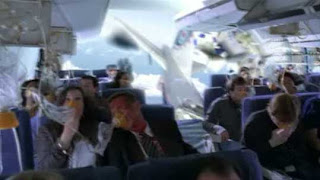 One of the most difficult and frustrating aspects of my golf game has been taking the progress I make on the range to the course. Part of that can be attributed to less-than-intelligent practice; it's easy to groove a nice swing with the seven-iron by your 14th consecutive swing with the club and easier still to forget the first 12 to 13 swings and convince yourself you hit that club well. It's no surprise then, that the results on the course, where it's "one and done" rarely match either the perception or the reality of the practice leading up to that round. Towards that end, I've resolved to dedicate far more of my practice to true simulation, where I do only get one shot with each club and, further, don't get the luxury of working my way up gradually through the clubs, but rather hit driver, 7-iron, gap wedge or driver, 9-iron, 9-iron (chip).
One of the most difficult and frustrating aspects of my golf game has been taking the progress I make on the range to the course. Part of that can be attributed to less-than-intelligent practice; it's easy to groove a nice swing with the seven-iron by your 14th consecutive swing with the club and easier still to forget the first 12 to 13 swings and convince yourself you hit that club well. It's no surprise then, that the results on the course, where it's "one and done" rarely match either the perception or the reality of the practice leading up to that round. Towards that end, I've resolved to dedicate far more of my practice to true simulation, where I do only get one shot with each club and, further, don't get the luxury of working my way up gradually through the clubs, but rather hit driver, 7-iron, gap wedge or driver, 9-iron, 9-iron (chip).Beyond that, however, I have to admit to nerves taking over. For every other sport I'd played at any competitive level, nerves could be fairly easily harnessed to work to my advantage. Further, those other sports forced me to react and operate far more instinctively given that the sport unfolded far more quickly (i.e., outside of the free throw in basketball, no aspect of the sport is as deliberate and slowly paced as every golf shot). With golf, though, I have the "luxury" (which at this point is still a curse) of having the game unfold largely at my pace - and it's less reactive than it is contemplative. This tends to exacerbate the nerve problem.
The way I'm coming to address this is through an old technique that got me through many a flight back when I was *terrified* of flying. Now I'll do it multiple times per week without batting an eye (yes, I'm highly important and "in demand"), but there was a time where the thought alone would cause me to sweat, even with no flight scheduled or anticipated for that year. Yet I still had to make it back for weddings, family celebrations and the like, so I needed a coping mechanism of sorts. That became a very steady, calming counting at a very soothing pace...almost like an internal metronome. In "packs" of two, I'd just start counting off cycles of 100s: one, two.....(pause)....three, four....(same pause).....five, six. I would carry this out at a minimum of 10 times and often restart the count if we hit turbulence. I won't lie, there was a flight or two where I counted the WHOLE flight off in that manner.
But it worked. And I figure if it allowed me to remain at least somewhat calm and rational when I quite truly believed I was seconds from plummeting to my fiery death (to the point of very seriously debating whether I should alert the flight attendants to my need for an emergency landing), then surely it can get the trick done for the golf jitters.
To test the theory, I've begun counting off in that same fashion that I used on my (perceived) doomed airliners while on the range or practice green. I always start at 21 these days (it just seems more melodious or something) and I have found so far that some of my best practice stretches come when the count is successful in removing me from my nerves. In fact, on my best shots, I'll often find myself still counting out to 88 or so in my head without realizing it - recognizing the ongoing count only when I go to start over on the next shot.
They say every golfer needs a routine and mental "constant" to act as a security blanket in a sport that tends to remove you from the more rhythmic flow of instinct and reaction - and I think I've rediscovered mine.





